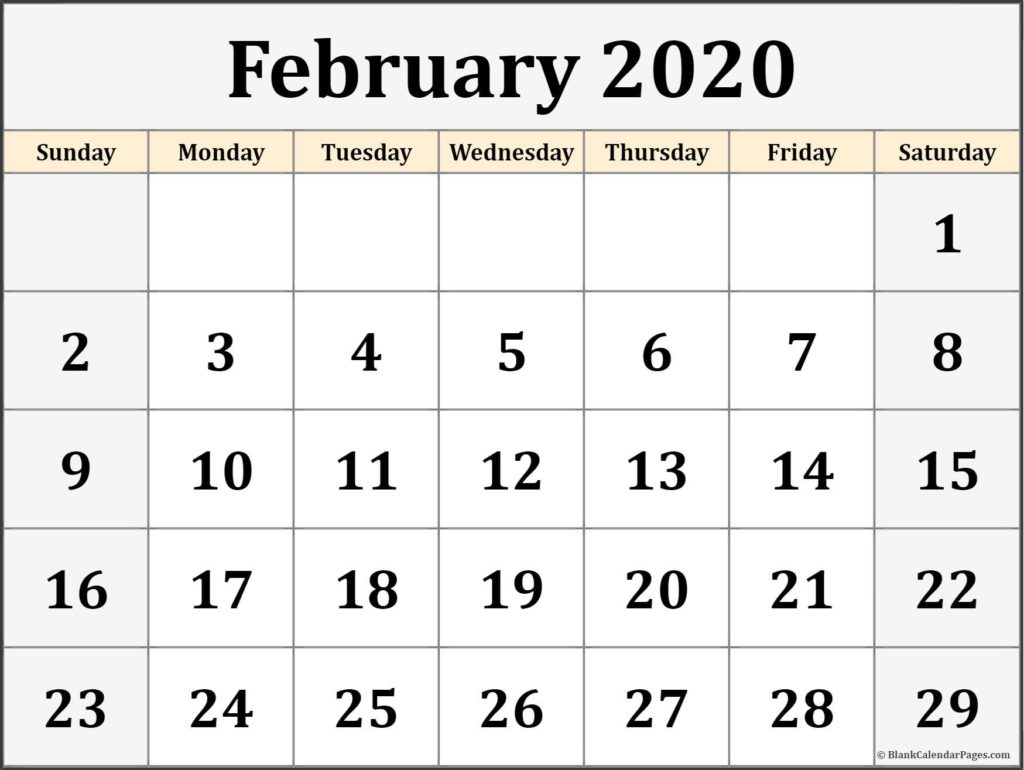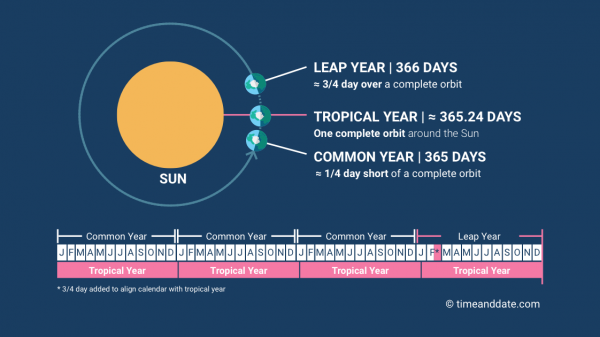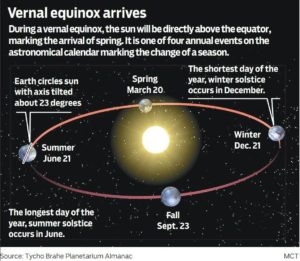Feb
23
The Whats and Whys of Leap Year
“Thirty days hath September, April, June and November.
All the rest have thirty-one, except February alone,
which has twenty-eight rain or shine, except for leap year, 29.”
— traditional mnemonic verse (though, there are variations)
Unless you’ve been living under a rock, you probably realize that 2020 is a “leap year”, since February will have 29 days instead of the usual 28. But, why is that? And why is it called a “leap year” when we actually gain a day? Shouldn’t it be a “plus year” or “stretch year” or something like that? (To be clear, this article deals with the western calendar, though there are other calendars in use around the world and they deal with the issue in varying (but similar) ways.) Well, if you have never looked into it or just forgot how it works after it was explained to you back in high school (or whenever), allow me to fill you in….

The “problem” that the leap-day-in-a-leap-year is meant to resolve has to do with a solar year not actually being 365 days long. Even the ancients figured out that there were a few extra hours or so to deal with. In fact, the mean solar year (aka tropical year, i.e., the time for one complete Earth-orbit around the Sun) in 2000 was ~365.242189 days — or, 365d 5h 48m 45s.
Lunisolar calendars will typically add in a month as its corrective solution to synchronize with the seasonal year. For example, the Hebrew calendar adds a 13th, 30-day month (Adar Aleph) seven times over each 19-year span to supplement the normal 12 months of its common years. The ancient Romans used a lunisolar system until it was replaced by the lunar-based Roman Republican calendar, which was in turn abandoned in 45 BC when Julius Caesar instituted the Julian calendar — developed by Alexandrian astronomer Sosigenes. A common year in the solar Julian calendar consisted of 365 days divided into 12 months, ending with February. Due to a calculation error, initially every third year was a leap year, with an additional day tagged onto the end of February. As of AD 8 (or, was it AD 12?), the correction was made and leap year became every fourth year.
This was good but not accurate enough. If the solar year was exactly 6 hours longer, this solution would have worked out great. But, it was still off by a bit over 11 minutes; this a) causes too many leap years and b) the difference adds up, throwing things out of whack at a rate of one day every ~130 years. This was resolved with the introduction of the Gregorian calendar in October 1582 by Pope Gregory XIII. This is what the West — most of the modern world, in fact — uses today.
As a corrective to the Julian system, the Gregorian calendar added a couple more rules in the calculation for when a year should be treated as a leap year.

“Every year that is exactly divisible by four is a leap year, except for years that are exactly divisible by 100, but these centurial years are leap years if they are exactly divisible by 400. For example, the years 1700, 1800, and 1900 are not leap years, but the years 1600 and 2000 are.” — Introduction to Calendars, United States Naval Observatory
Or, if you prefer to see it as pseudocode, here is one way to do it:
IF (year exactly divisible by 400) THEN (it's a leap year)
ELSE IF (year exactly divisible by 100) THEN (it's a common year)
ELSE IF (year exactly divisible by 4) THEN (it's a leap year)
ELSE (it's a common year)
There are additional caveats for using the formula for dates prior to October 1582.
Obviously, it still isn’t as precise as it could be, but the remaining offset is considered negligible. It should be noted that a revision was proposed for the Julian calendar by the Serbian scientist Milutin Milanković in 1923. The Revised Julian calendar is actually more accurate than the Gregorian calendar, but the leap year rules are a little more complex, the benefits are extremely small, and it was never proposed for civil use in the first place. (It was meant to reform time reckoning in the Orthodox Church.)
You may still be wondering about a few details. For example, why is February the only month under 30 days in the Gregorian calendar? Answer: It’s actually a vestige from the first Roman calendar. The king, Numa Pompilius (715–673 BC), decided for superstitious reasons that February would be the unlucky month of 28 days.

There is a Roman connection to why we add the leap day onto February, too, but it’s a bit complicated. What is important is that, although we begin our calendar with January, the tropical year begins with the March equinox (aka first day of Spring). You want to add in the corrective day shortly before the new tropical year begins, and February is the month that immediately precedes March. This keeps the March equinox to March 20th, give or take a day. Without leap days, the astronomical seasons would occur at increasingly later dates. In fewer than 50 years, the March equinox would shift to April and the June solstice would be pushed into July. Weird, right? A leap day brings us back in sync with the tropical year.
Related to this is the reason why it’s called “leap year” when we actually gain a day. From Wikipedia:
“The term leap year probably comes from the fact that a fixed date in the Gregorian calendar normally advances one day of the week from one year to the next, but the day of the week in the 12 months following the leap day (from March 1 through February 28 of the following year) will advance two days due to the extra day, thus leaping over one day in the week. For example, Christmas Day (December 25) fell on a Tuesday in 2012, Wednesday in 2013, Thursday in 2014, and Friday in 2015, but then leapt over Saturday to fall on a Sunday in 2016.”
So, now you know. (And, so do I.)
P.S. The practice of inserting a day (or other time period) into some calendar years to make sure the calendar follow the seasons or moon phases is called intercalation (or embolism). Associated terms would be “intercalary day”, “intercalary year”, etc.
P.P.S. Too much info? Sorry, sometimes I can’t help myself.
















